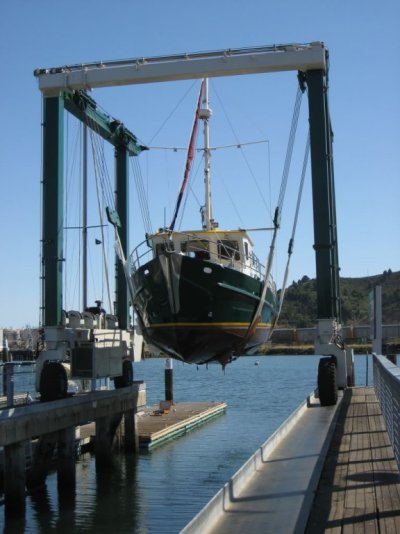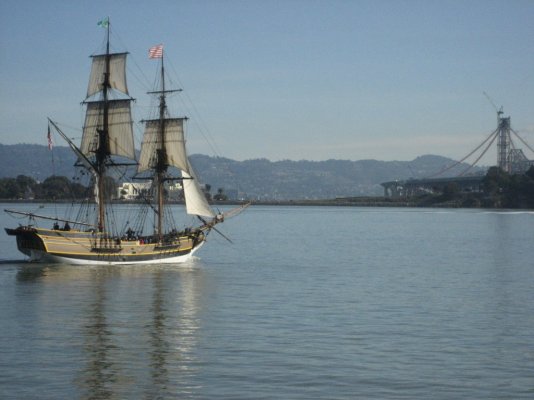markpierce wrote:
Believe the Coot has a semi-displacement/planing*hull.
*From your photos I would agree although the bottom of your boat has more curved sections than the typical semi-planing hull used on something like a GB, CHB, etc.
To me a displacement hull is one that, while it can be forced a bit faster through the water with the application of a huge amount of power, most of that engergy is absorbed by the hull digging a deeper hole in the water.
A semi-planing hull (I agree with naval architects like Tom Fexas that semi-displacement is simply a marketing term) is one in which an addition of a lot of power results not in the boat digging a deeper hole but in generating enough hydrodynamic pressure against the flatter surfaces of the hull to begin to lift it up in the water, thus reducing wetted surface, thus reducing drag, thus enabling it to go faster albeit with an increase in fuel burn--- very possibly a significant increase as in the case of the previous generation of GB hulls.
A planing hull is just that.* A hull that is designed to generate the maximum possible hydrodynamic force against the wetted surfaces of the hull and thus lift the hull a lot and reduce the drag a lot in as efficient a manner as possible.* This in turn means the boat can go considerably faster than a semi-planing boat with the same power and WAY faster than a displacement boat of the same length, and the greater speed makes the increased fuel burn at least theoretically a good return on the investment.
Those are
my definitions of the three hull types.* So based on them, I would say
Coot has a semi-planing hull but a pretty inefficient one if one actually wanted to take advantage of its ability to be lifted and reduce the wetted surface and drag.* Major power would be needed.*
So why use a semi-planing hull on a low-powered boat like the
Coot or an early GB?** One advantage of this hull type even at slow speeds is that the flat after-section, sharp-chined hull will provide a less rolly ride than a hull with a typical, rounded displacement configuration.* This is certainly true of our GB.* However, less roll comes with a price in that the characteristics of the roll with its sharper "snap back" are uncomfortable to a lot of people.
The second advantage is that a semi-planing hull can be driven a little bit faster than displacement speed with the application of not-that-much-more power.* So while the displacement speed of our hull is seven-point-something knots, the hull can be driven at eight, eight and a half knots without a lot more power or fuel burn needed.* A half to a whole knot more speed doesn't sound like much but to a lot of people--- and the sales department--- it is.
The hull on our boat could be driven at 14 knots or so.* Later GB36s with big engines can achieve this.* But at that point the fuel burn becomes enormous.
-- Edited by Marin on Friday 24th of February 2012 03:28:03 PM





